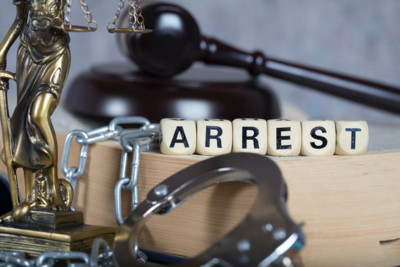surveillance

SURVEILLANCE and IDENTIFICATION.
Subject to appropriate lawful
authorization,covert investigation
is used to obtain information
required as evidence.
This method of investigation
acquires evidence of the suspect
IMPLICATING THEMSELVES.
All investigation have a statutory
foundation covert surveillance
is no different.
the European Convention on
Human Rights (ECHR) Article 8(1)
"the right to respect for private and
family life"
There must be no interference
with this right,except as provided
for by law.
ESSENTIALLY,POLICE OFFICERS CAN ONLY USE
POWERS GRANTED TO THEM
BY PARLIAMENT.
The principle source of legal
authority comes from
(PACE) 1984
Police Act 1997 part III
empowers authorities to interfere
with Private Property in
circumstances that would other-
wise constitute a tort or trespass
Regulation of Investigatory
Powers Act 2000 (RIPA)
empowers investigators to
Specific methods in order to
acquire evidence,
without the subject being made
aware of the investigation through
utilization of such tactics.
1) interception of communication.
2) direct surveillance.
3) intrusive surveillance
4) covert human intelligence
sources.
Covert investigation does not
automatically require
authorization
Covert Investigation is regulated
in order to meet four criteria
1) evidence or intelligence must
be obtained in a manner that
preserves the integrity of the
Criminal Justice System
2) statutory rights of the subject
must not be breached,except
where there is statutory provision
to do so.

3) the rights and privacy of other
citizens not suspected of criminal
involvement, must be protected
and collateral intrusion,should be
minimized through effective
investigation management
4) the Professional Integrity of
investigations must be
demonstrated or,if necessary,
its absence exposed
DEFINITION of SURVEILLANCE.
1) monitoring,observing or
listening to persons,their
movements,their conversations
or their other activities or
communications,
2) recording anything monitored,
observed or listened to in the
course of surveillance;and
3) surveillance by or with the
assistance of a surveillance
device.
RIPA 2000 s48(2)
DIRECTED SURVEILLANCE
It is lawful only if it is authorized
for the purpose of preventing or
detecting crime or of preventing
DISORDER
INTRUSIVE SURVEILLANCE
only to be used for the
investigation of SERIOUS CRIME
INTERCEPTION of COMMUNICATION.
This is generally unlawful and
the product cannot be used as
evidence
CODE of PRACTICE (Code D)
IDENTIFICATION.
Used by the police force to
identify people in connection with
investigation of offences and
keeping of accurate and reliable
Criminal Records
the Powers and Procedures in
this code,must be used
responsibly,with respect for people
to whom they apply,and without
unlawful discrimination.
Equality Act 2010,
makes it unlawful for
Police Officers to discriminate
against,harass or victimise any
person on the grounds of
PROTECTED CHARACTERISTIC
age,disability,gender reassignment,
race,religion,or belief,sex or
sexual orientation,marriage,civil
partnership,pregnancy and
maternity,when using their powers.
When police forces,are carrying
out their functions,they also have
a duty,to have regard to the need
to eliminate unlawful discrimination,
and victimisation,and to take steps
to foster good relations.
Code D,divides the method of
identification into two categories.
1) where the identity of the
suspect is known
2) where the identity of the
suspect is not known.
Circumstances where the
suspect is known and not
available.
Police Officers may follow
identification process,using
covert filming,or make use of
any suitable moving or still
image.
Other alternatives may be a
Driving Licence Photograph
or Passport Photograph.
another option if non
of the mentioned
is available,would
be for the Police Officer
to obtain a
SECTION 8 (PACE)
Search Warrant,to search
premises if circumstances
merit this action.
